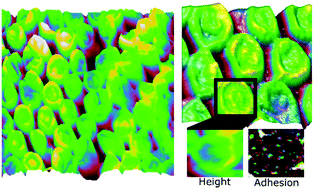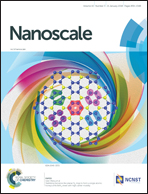Thermo-responsive PNIPAm nanopillars displaying amplified responsiveness through the incorporation of nanoparticles
Abstract
The possibility of combining more than one stimulus-responsive property into a single material holds interesting potential for the creation of adaptive devices to be used in diverse fields such as drug delivery, nanomedicine and tissue engineering. This paper describes a novel material based on thermo-responsive PNIPAm nanopillars with amplified surface properties through the incorporation of Fe3O4 nanoparticles. The incorporation of magnetic nanoparticles into the nanopillars, prepared via surface-initiated atom-transfer radical polymerization in anodized aluminum oxide templates, sharply increased their stiffness and hydrophobicity when increasing the temperature above the volume phase transition temperature. Furthermore, their magnetic response turned out to be proportional to the amount of the incorporated nanoparticles. The possibility of sharply increasing the stiffness with a temperature variation close to the human body temperature paves the way to the application of these substrates as “smart” scaffolds for cell culture. Additionally, the presence of superparamagnetic nanoparticles in the nanopillars offers the possibility of using these nanostructured systems for magnetic hyperthermia.



 Please wait while we load your content...
Please wait while we load your content...